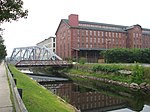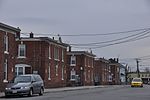Lawrence Experiment Station
1887 establishments in MassachusettsBuildings and structures in Lawrence, MassachusettsHistoric Civil Engineering LandmarksLandmarks in MassachusettsWater treatment facilities

The Lawrence Experiment Station, now known as the Senator William X. Wall Experiment Station, was the world's first trial station for drinking water purification and sewage treatment. It was established in 1887 in Lawrence, Massachusetts. A new, 22,000-square-foot (2,000 m2) building opened in 1954 at 37 Shattuck Street. In 1975, the station was designated as a National Historic Civil Engineering Landmark by the American Society of Civil Engineers. In 1993, the facility was renamed after state senator William X. Wall, who had lobbied for the construction of the new station in the 1950s.
Excerpt from the Wikipedia article Lawrence Experiment Station (License: CC BY-SA 3.0, Authors, Images).Lawrence Experiment Station
Shattuck Street, Lawrence
Geographical coordinates (GPS) Address Nearby Places Show on map
Geographical coordinates (GPS)
| Latitude | Longitude |
|---|---|
| N 42.6983 ° | E -71.1655 ° |
Address
Shattuck Street 33;37
01840 Lawrence
Massachusetts, United States
Open on Google Maps









